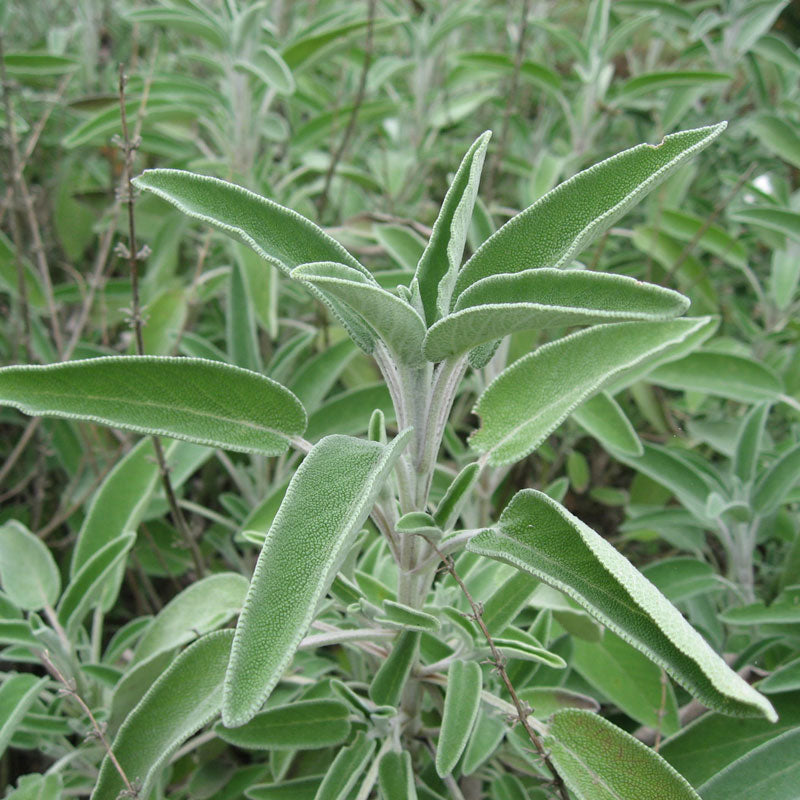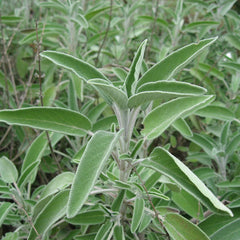

Sage (Salvia officinalis)
- $14.00 CAD
- $14.00 CAD
- Unit price
- per
50g, 100g, 250g
Couldn't load pickup availability
Parts used: Leaves
Properties
Alterative, anti-galactagogue, antihidrotic, antioxidant, antiseptic, antispasmodic, aromatic, astringent, carminative, diaphoretic, digestive, febrifuge, parasiticide, stimulant, vulnerary
Primary nutrients
Calcium, phosphorus, potassium, silicon, sodium, sulfur, vitamins A, B-complex and C
Sage may be used in a lotion to heal sores and other skin ailments. The fresh leaves are chewed as a remedy for infections of the mouth and throat, and gargling with sage can help a sore throat. Sage helps with excessive mucus discharge, nasal drip, sores and excessive saliva secretions, and its antipyretic qualities have been known to help with fevers, night sweats and related problems.
Sage is also beneficial for mental exhaustion and for increasing the ability to concentrate. It improves memory and has been used on some forms of mental illness. It has also been used to treat digestive disorders such as ulcers, nausea and diarrhea, and it is used topically as an antiseptic for sores, sore gums, and even as a tooth cleaner or hair tonic.
Sage has been found to contain antioxidant properties. There is evidence of some antimicrobial activity as well.
People with seizure disorders should use sage only under the supervision of a health-care provider.
Primary Applications
Coughs
Diabetes
Fevers
Gastric disorders
Gums, sore
Indigestion
Infection
Lactation, absent
Memory impairments
Mental illness
Mouth sores
Nausea
Nervous conditions
Night sweats
Sores
Throat, sore
Worms
Secondary Applications
Bites, snake
Blood infections
Colds
Cystitis
Diarrhea
Dysentery
Flu
Hair loss
Headaches
Kidney stones
Laryngitis
Lung congestion
Mucus discharge
Nasal drip
Palsy
Parasites
Phlegm
Sinus congestion
Skin disorders
Tonsillitis
Ulcers
50g, 100g, 250g
RELATED PRODUCTS
- Choosing a selection results in a full page refresh.


